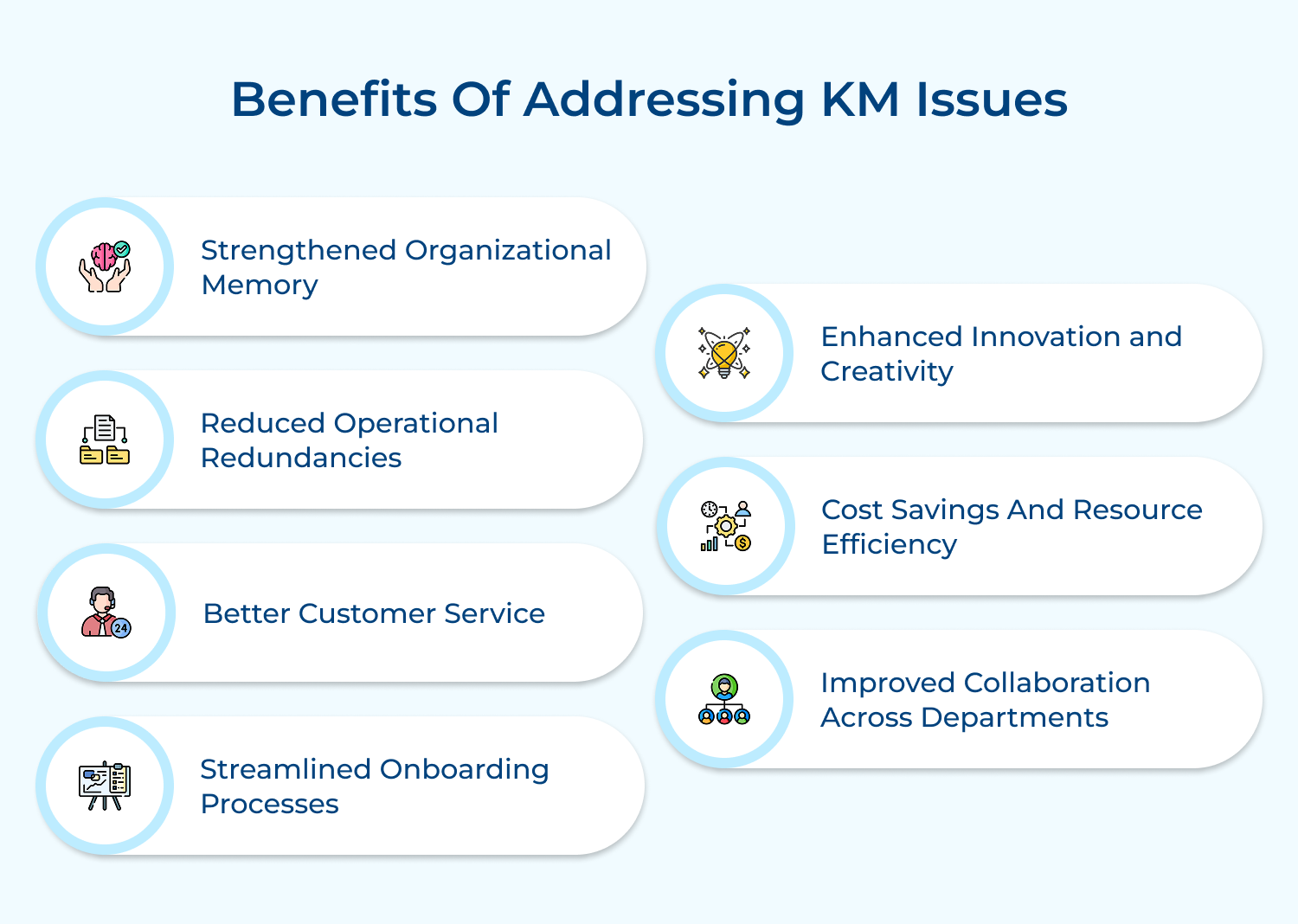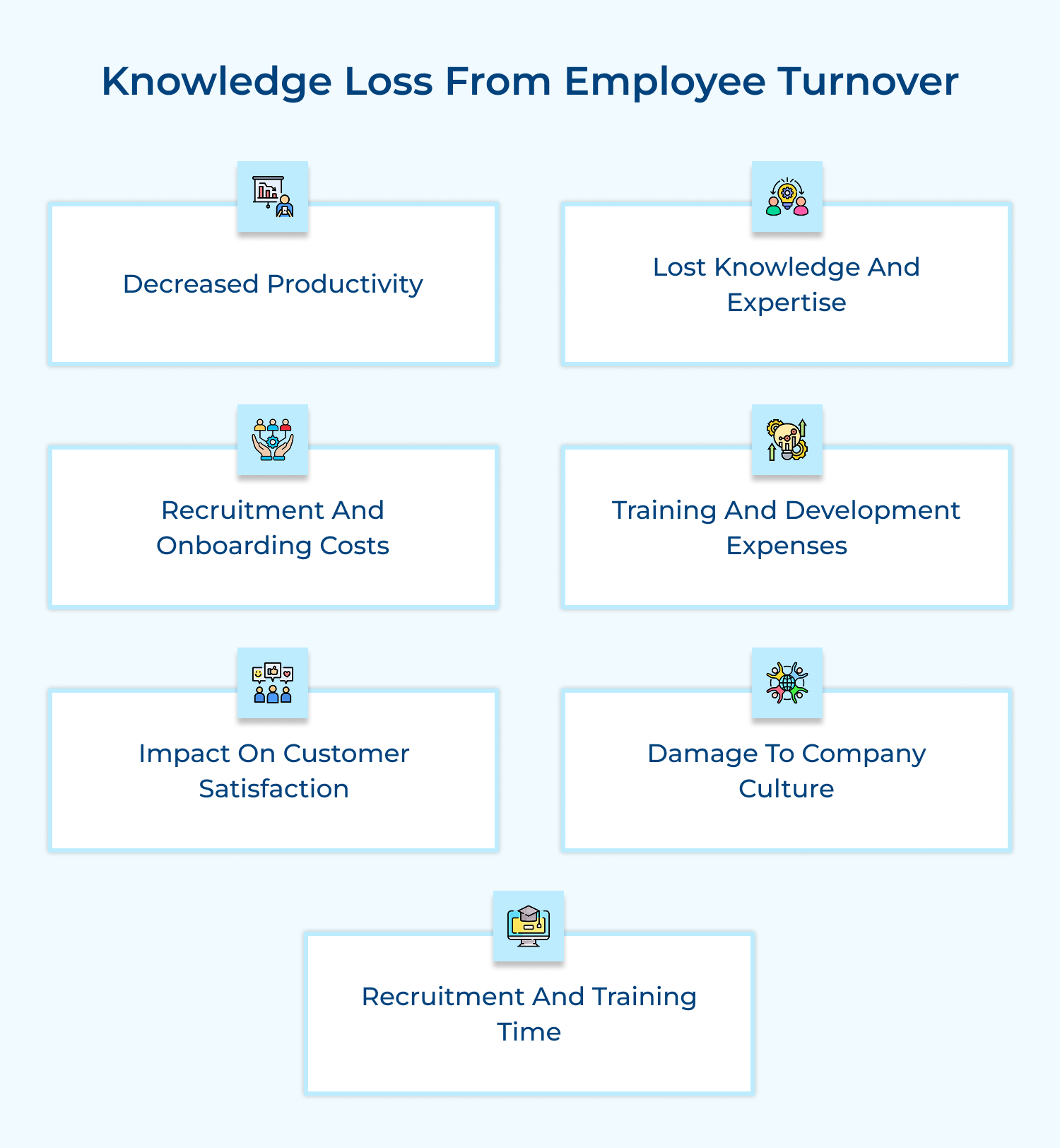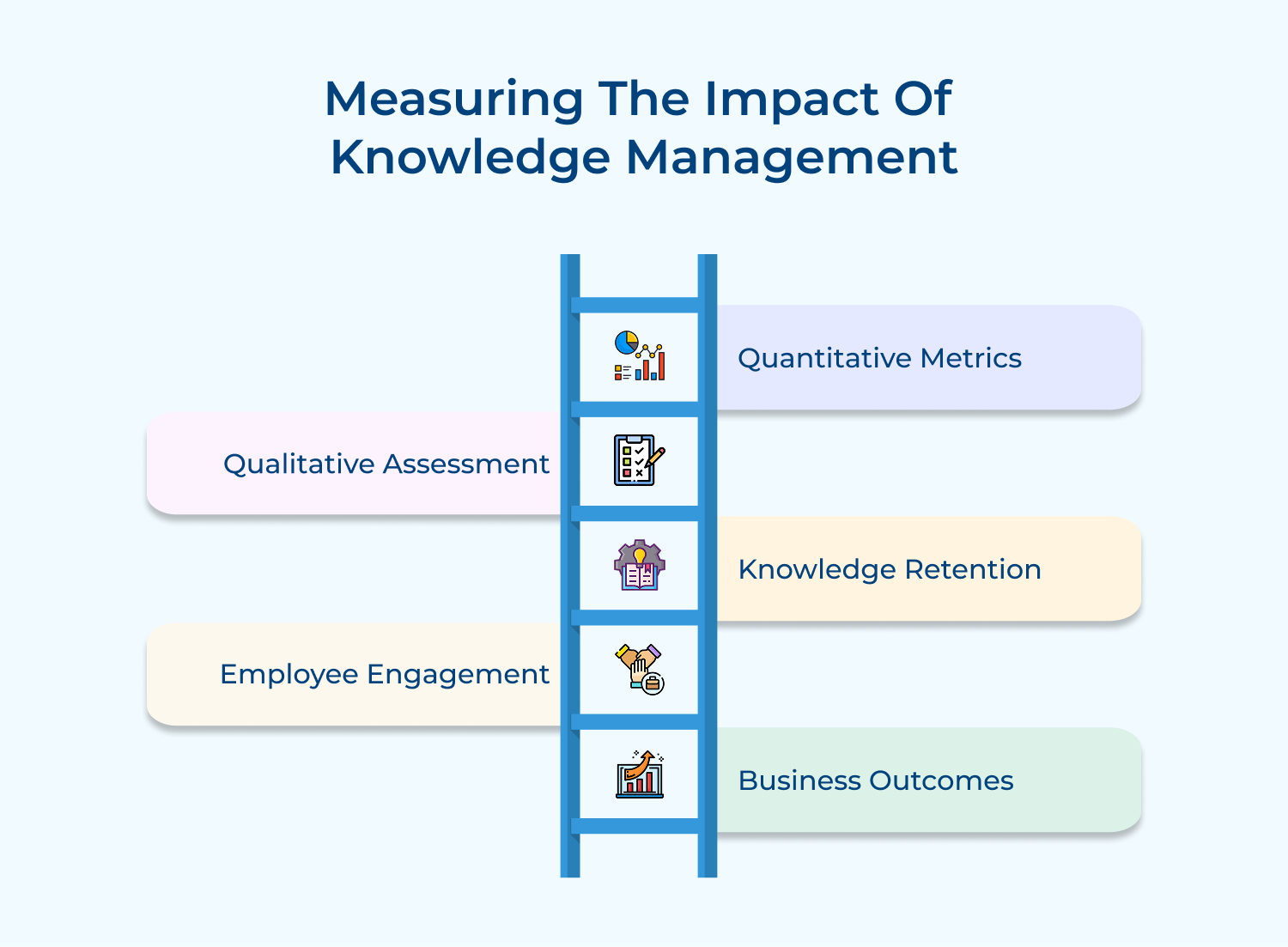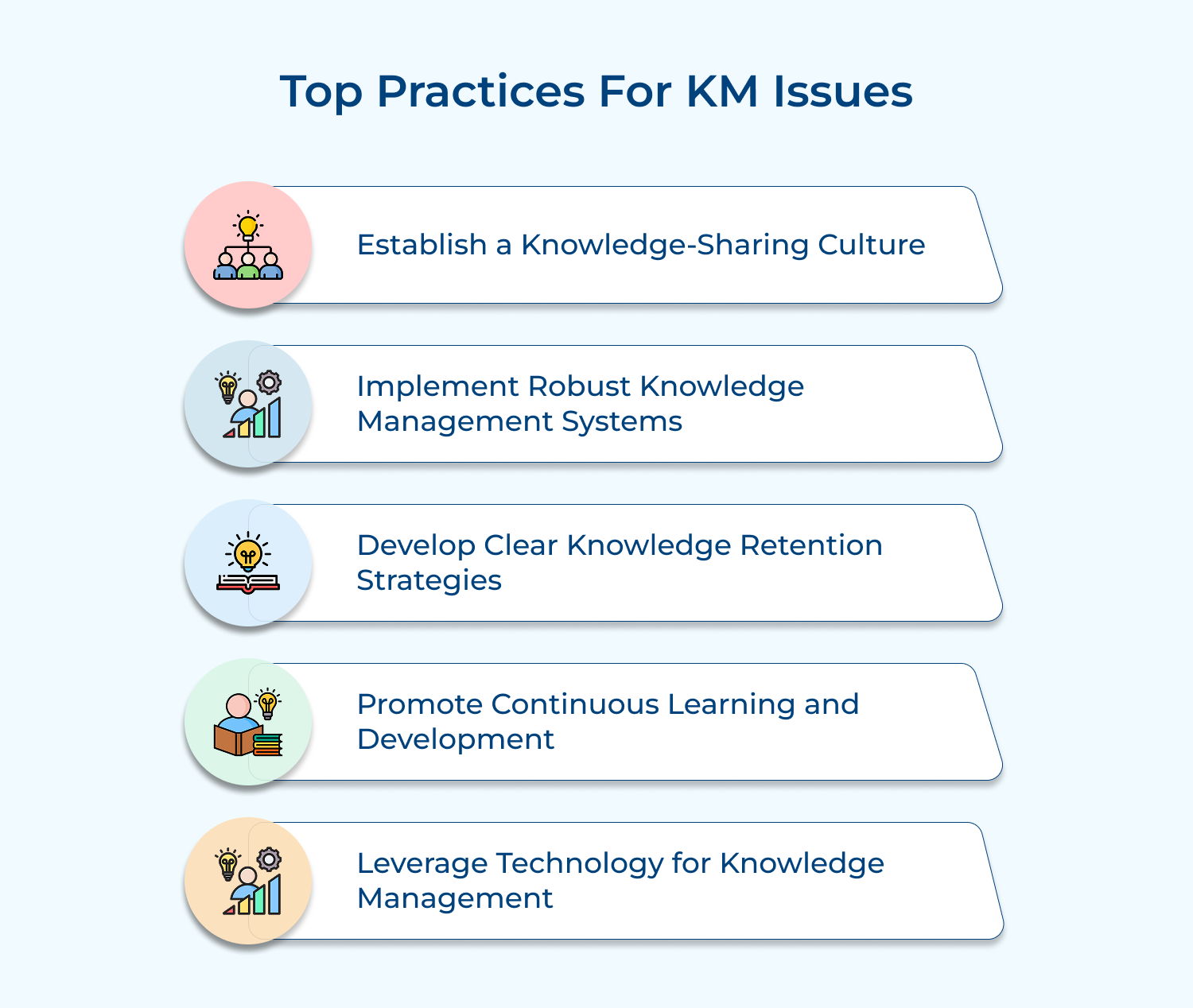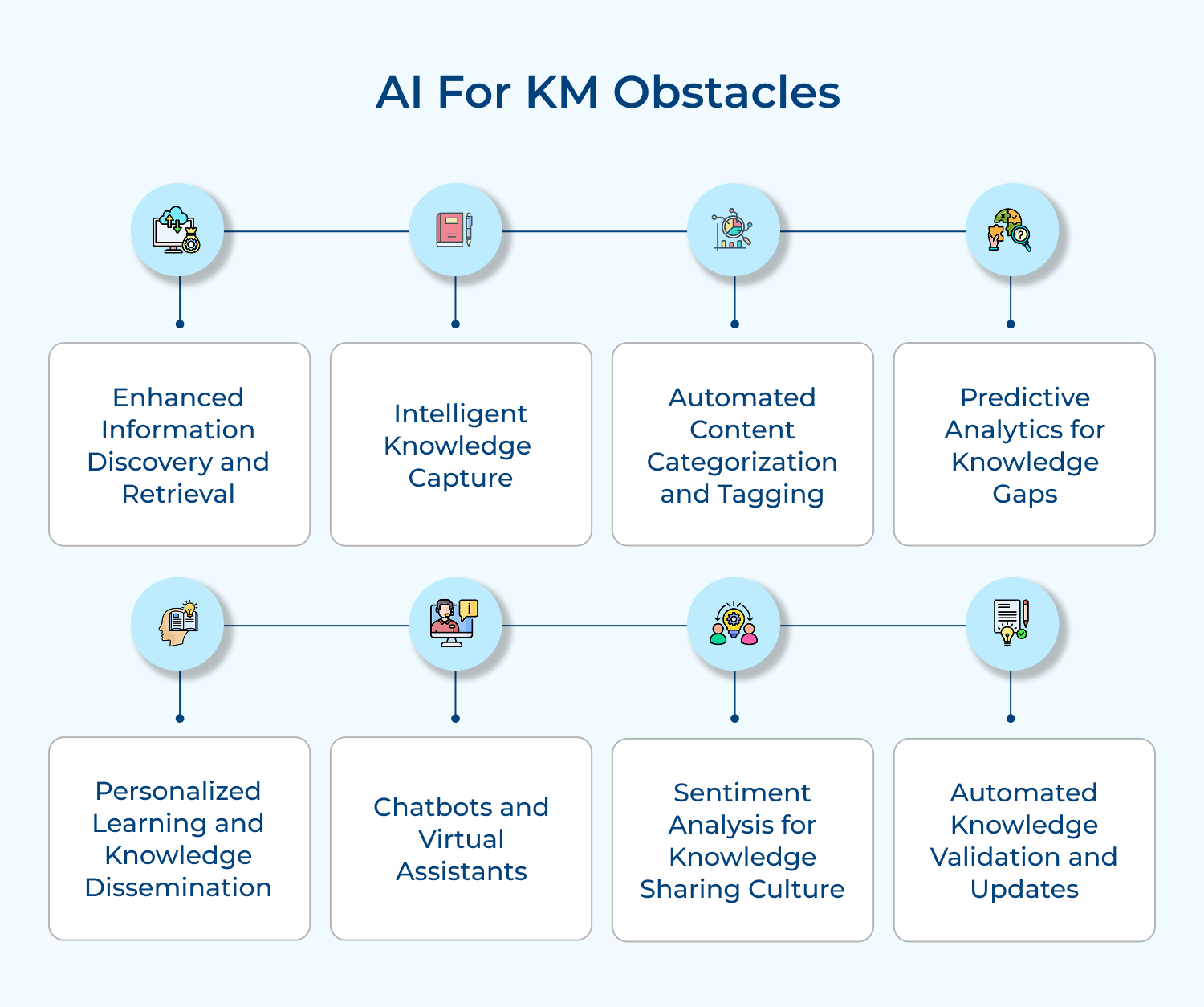1. Enhanced Information Discovery and Retrieval
AI-powered search engines and recommendation systems are dramatically improving the way employees find relevant information. These systems use natural language processing and machine learning algorithms to understand context and intent, delivering more accurate and personalized search results.
By analyzing user behavior and content relevance, AI can predict and suggest relevant information before users even ask for it, significantly reducing time spent searching for knowledge.
2. Intelligent Knowledge Capture
AI technologies like speech recognition and NLP are making it easier to capture tacit knowledge from conversations, meetings, and informal exchanges. These tools can automatically transcribe and summarize discussions, extracting key insights and adding them to the knowledge base. It helps organizations preserve valuable institutional knowledge that might otherwise be lost.
3. Automated Content Categorization and Tagging
AI algorithms can automatically analyze and categorize vast amounts of unstructured data, assigning relevant tags and metadata. It improves the organization of knowledge repositories, making information discoverable and easier to manage. Machine learning models can learn from user interactions to continually refine and improve these categorization systems over time.
4. Predictive Analytics for Knowledge Gaps
Analyzing patterns in knowledge access and utilization, AI can identify potential knowledge gaps within an organization. These insights can help leaders proactively address areas where knowledge is lacking or at risk of being lost, enabling more strategic knowledge management initiatives.
5. Personalized Learning and Knowledge Dissemination
AI/ML driven learning management systems can tailor knowledge dissemination to individual employee needs and learning styles. By analyzing an employee’s role, skills, and past interactions with the knowledge base, these systems can recommend personalized learning paths and deliver relevant information at the right time, enhancing knowledge absorption and application.
6. Chatbots and Virtual Assistants
AI-powered chatbots and virtual assistants serve as front-line knowledge workers, providing instant responses to common queries and guiding users to relevant resources. These tools can handle routine information requests, freeing up human experts to focus on more complex knowledge-sharing tasks.
7. Sentiment Analysis for Knowledge Sharing Culture
Advanced AI can analyze communication patterns and sentiment across an organization to gauge the health of its knowledge-sharing culture. By identifying barriers to knowledge exchange and highlighting successful collaboration patterns, leaders can take data-driven steps to encourage a more open and collaborative environment.
8. Automated Knowledge Validation and Updates
Machine learning algorithms can continuously monitor and analyze the usage and relevance of knowledge assets. These systems can flag outdated information for review, suggest updates based on new data, and even automate routine updates to keep the knowledge base current and reliable.
Examples of Tackling Knowledge Management Challenges
Here are the real-life examples demonstrating effective ways organizations have tackled knowledge management challenges:
1. World Bank’s Communities of Practice (CoPs)
Challenge: Sharing knowledge across a global organization with diverse projects and expertise.
Solution: The World Bank established thematic Communities of Practice, connecting experts from different countries and departments. These CoPs use digital platforms to facilitate discussions, share documents, and collaborate on projects.
Impact: The CoPs have encouraged innovation and cross-pollination of ideas across the organization. For instance, a water management solution developed in Brazil was successfully adapted for projects in India, demonstrating the power of global knowledge sharing.
2. Toyota’s Quality Circles
Challenge: Continuous improvement and knowledge sharing on the factory floor.
Solution: Toyota implemented Quality Circles, small groups of workers who meet regularly to discuss and solve work-related problems. These circles document their findings and share them across the organization.
Impact: This approach has been a cornerstone of Toyota’s famous production system, leading to countless small improvements that collectively result in significant quality and efficiency gains. It has helped Toyota maintain its position as a leader in automotive manufacturing quality.
3. Google’s Internal Q&A Platform
Challenge: Efficiently sharing knowledge across a rapidly growing, innovation-driven company.
Solution: Google created an internal Q&A platform where employees can ask and answer questions on various topics, from technical issues to company policies. The platform uses AI to route questions to the most appropriate experts.
Impact: This system has dramatically reduced the time employees spend searching for information, encouraging a culture of knowledge sharing. It has been particularly effective in onboarding new employees and facilitating cross-team collaboration on complex projects.
4. Siemens’ Reference Architecture Management
Challenge: Managing and sharing complex technical knowledge across global engineering teams.
Solution: Siemens developed a centralized Reference Architecture Management system, which standardizes and stores design patterns, best practices, and reusable components for software development.
Impact: This system has significantly reduced redundant work, improved software quality, and accelerated project delivery times. It has been particularly valuable in helping Siemens maintain consistency and quality across its diverse range of products and services.
Turning KM Challenges into Opportunities
Knowledge management challenges present significant hurdles for organizations in an information-rich environment. From information overload and knowledge silos to employee turnover, these issues can impede growth and innovation.
Implementing robust technologies, encouraging a culture of knowledge sharing, and leveraging AI can transform how organizations capture, organize, and utilize their collective wisdom. Companies that successfully address these challenges stand to gain considerable competitive advantages. They can enhance decision-making, boost productivity, and drive innovation.
As the business landscape continues to evolve, mastering knowledge management will become increasingly crucial for sustained success and adaptability in the global marketplace.

